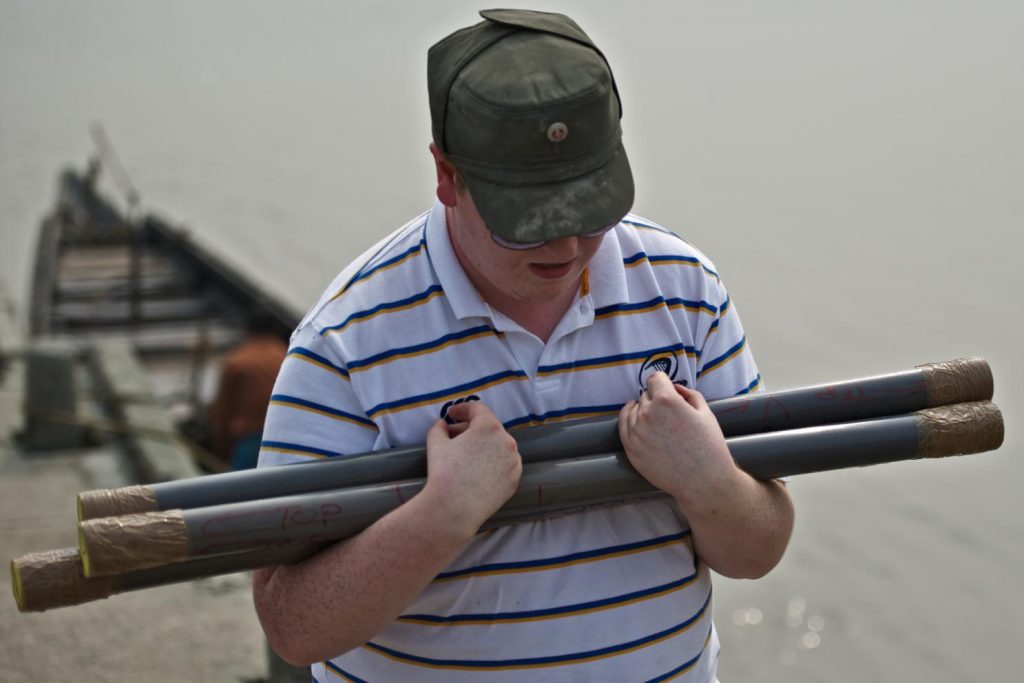

Why I’m a fan of the Stitz Corer

January 6, 2014
By Rory Flood
PhD Student, Queen’s University Belfast, School of Geography, Archaeology and Palaeoecology (GAP) www.qub.ac.uk/schools/gap
I’ve used the Stitz coring system in several locations across the world and have found it to be a very robust, well-constructed apparatus for most soil and sediment type sampling. The sample retrieval from the Stitz allows for a consistent record of material to be collected in the most least-disturbed manner as possible.
Having used the Stitz in the Sunderbans mangrove forest in India, I found it to highly beneficial in collecting fine sediment material, particularly where there was a high water table. The robust construction of the Stitz barrel and piston means it can handle generally difficult sub-surface material, such as shells and gravels. Furthermore, the simple construction of the apparatus allows quick in-the-field cleaning and maintenance.
The only draw-back of the Stitz coring system is the threads used on the extension rods which consist of very narrow threads that if tightened incorrectly can lead to fracturing and potential sample loss. However, operator caution is advised and employing a standard operating protocol prior to coring operations will ensure successful drilling. Along with this, the Stitz requires some anchor point for the piston line to be attached to which in some instances, where such anchor points are lacking can present a challenge. Apart from these concerns, the Stitz’s light construction allows easy movement across difficult terrain, thus enabling multiple borehole sites to be drilled.
Drilling depths achieved with the Stitz can in most cases eclipse those of manual hand augers. This is demonstrated in my own experience of using the Stitz in India, where I’ve achieved depths of up to ten metres in coastal mangrove forests where prior to this hand auger drilling had only managed depths of up to one metre. As a geoscientist the Stitz is an incredibly well built, well machine device that provides pristine sediment samples for my future analytical work.
For more information about the Stitz click here or call us on +44 (0)1428 661 660.
You might also be interested in...
Van Walt Guidelines for sampling for PFAS in Groundwater
November 13, 2024We need to make clear, that at the time of writing, there are no ISO or EN standards which deal with the sampling of groundwater for PFAS.
Read MoreSpot measurement v. continuous environmental monitoring
August 25, 2023Environmental monitoring has developed considerably over the years. From the time when a consultant went out monthly or quarterly with a dip tape to monitor the groundwater level in a borehole, wind forward...
Read MoreMeasuring Nitrates (NO3, NO3-N) in the field
June 20, 2023The interest in Nitrates is nothing new. One way or another we have been measuring them for half a century.
Read MoreVan Walt Environmental Equipment
A small selection of our environmental equipment